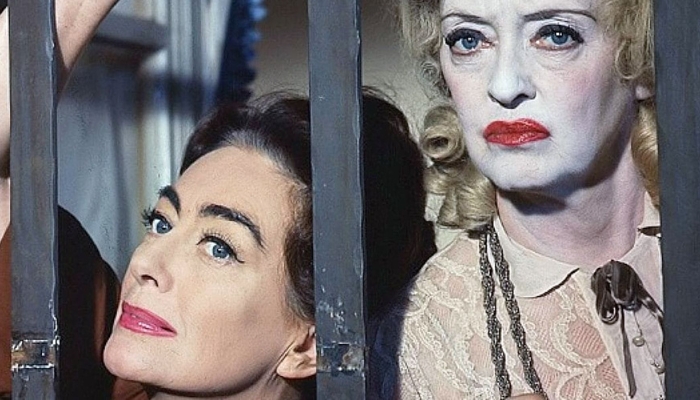Hollywood Hysteria: Films of the 1960s Depicting an Era of Turmoil
4 min read
In an era marked by American disillusionment, a range of films, from “Seconds” to “What Ever Happened to Baby Jane,” portrayed a culture on the brink of collapse
When assembling a lineup of films, a programming team or other curatorial body often faces the question of why now, and what relevance old art holds for the present moment. In the case of the Criterion Channel’s new series, “Hollywood Crack-Up: The Decade American Cinema Lost Its Mind,” featuring a selection of arthouse films from the 1960s, the argument is almost self-evident. These bursts of cinematic madness hail from a not-so-distant era when governmental credibility had plummeted to an all-time low, and the cultural divide had widened to unprecedented levels. It was a time when the disillusionment of a mistreated youth generation ignited student protests against a distant war influenced by questionable political motives. It was a time when emerging minority groups demanded rights and dignity in the face of rampant prejudice. It was a time when the fearful old guard felt that everything they once took for granted had been overturned, replaced by unfamiliar, unconventional, and anti-authoritarian new norms. The sense of calamity was palpable. Surely, in some way, we can find a connection.
The 16 feverish dreams depicted in these films explore themes of delusion, brainwashing, public violence, and other forms of deviant psychology. Each film is characterized by expressionistic, delirious aesthetics that match the narrative content. These films offer various interpretations of anxiety, a complex and pervasive sense of unease primarily focused on the shifting balance of power.
In John Frankenheimer’s sci-fi classic “Seconds” (a film that notably influenced “Mad Men,” serving as a parallel curriculum), the conflict is portrayed as age-related. The story follows a man who undergoes a radical transformation, receiving a new body to start a new life among a countercultural community in the West. However, much like many white-collar workers who seek to reset their lives by relocating and pursuing younger partners (as seen in “Faces,” where a suburban man sabotages his marriage), he discovers that his existential dissatisfactions persist regardless of his circumstances.
“Who’s Afraid of Virginia Woolf?” presents a similarly bleak narrative stemming from middle-aged discontent. The decision not to divorce leads to escalating hostility between a couple, embodying the breakdown of traditional family values.
After every peak, there is a corresponding trough; just as we are experiencing the aftermath of the idealistic promises made by Obama, the 1960s can be seen as a reaction to the disappointing reality following the prosperity of the postwar era. The idyllic image of the perfect family with a white picket fence and a dog had lost its credibility to a movement that saw this image as a deceitful façade. The cult film Pretty Poison distorts this idealistic notion into a dark satire, as the unstable ex-convict Anthony Perkins lures the 17-year-old seductress Tuesday Weld into a twisted relationship turned crime spree that defies the conventions of peaceful small-town life with a burst of violence. If the 1967 film Bonnie and Clyde shattered the romanticized idea of rebellious young lovers against a society that rejects them, the darkly humorous Pretty Poison takes it further, with Weld’s bloodthirsty teenage character reserving some of her fury for her own mother.
Black progressives, facing a grim choice between the Vietnam draft or enduring racism and systemic discrimination at home, harbored a deep and justified sense of resentment. Jules Dassin’s film Uptight seeks an alternative through revolution, only to meet a dead end; a group of radical militants is betrayed, mirroring the precariousness of their cause against the backdrop of fallout from Martin Luther King Jr.’s assassination. One scene, framed by funhouse mirrors (a recurring motif in Criterion’s series, symbolizing distorted internal states), confronts white poverty tourists—a situation Dassin aimed to avoid by considering policies many deemed extreme at the time. These films juxtapose this approach with the softened humanism of Pressure Point, where prison psychiatrist Sidney Poitier must set aside personal objections to treat Nazi sympathizer Bobby Darin. Hubert Cornfield’s morally complex film suggests we reject absolutism for compromise, though it risks losing perspective in its noble pursuit of unity.
The prevailing sense of impending doom portrayed by Hollywood reflected the industry’s own turmoil, caught between its classical roots and the emerging auteur-driven era. Films like Targets and What Ever Happened to Baby Jane? present contrasting elegies for Hollywood’s golden age; the former stages a shootout in a movie theater to symbolize the outdated artifice of old Hollywood giving way to the grim realities of widespread gun ownership, while the latter entombs two former stars in a decaying Los Angeles mansion, continuing Sunset Boulevard‘s transformation of silent film elegance into harsh, grotesque realism. Just as traditional American narratives of prosperity began to ring hollow amid societal upheavals, our most beloved fictions also became increasingly difficult to believe in.
The premise of activating dormant agents in “The Manchurian Candidate” (a film noteworthy for featuring Frank Sinatra engaging in kung fu, among its other merits) suggests that a latent psychosis exists within everyone, ready to be ignited by the deceptive actions of the state. The B-movie classic Shock Corridor similarly suggests that the human mind is much closer to the edge of madness than commonly believed, prone to retreat into a state of confused detachment when pushed to its limits. The 1960s brought global upheaval that destabilized every aspect of daily life, freeing filmmakers to create masterpieces without the constraints of traditional norms, resulting in the medium’s most innovative decade. Whether the current conditions exist for such a creative explosion is a separate discussion—time will tell. However, today, the internet provides an outlet for releasing collective frustrations, though the theme of insanity remains a timeless aspect of America’s national character.



